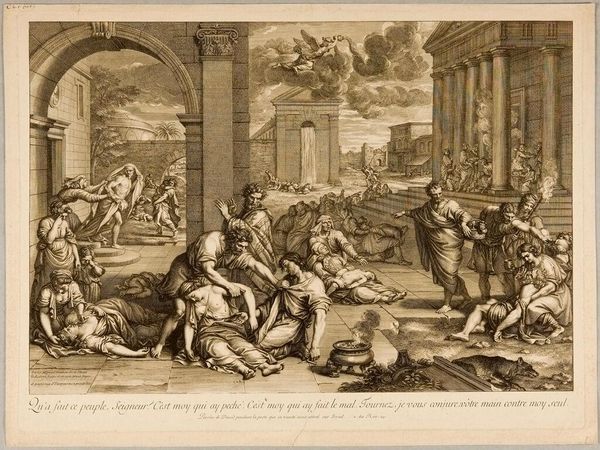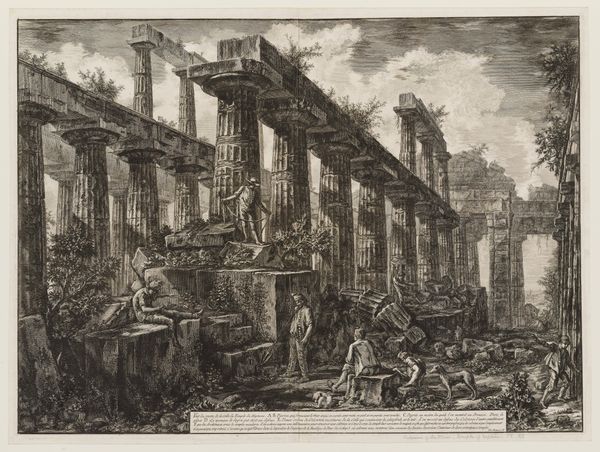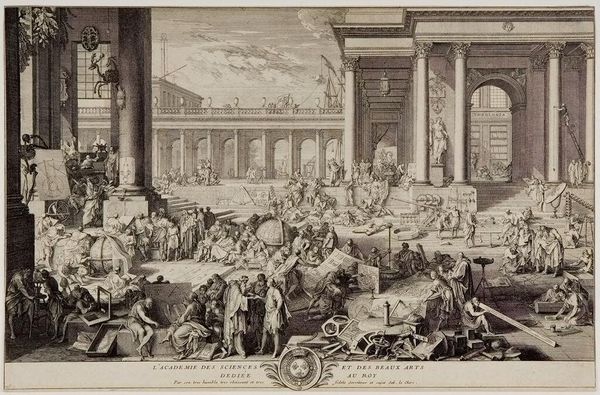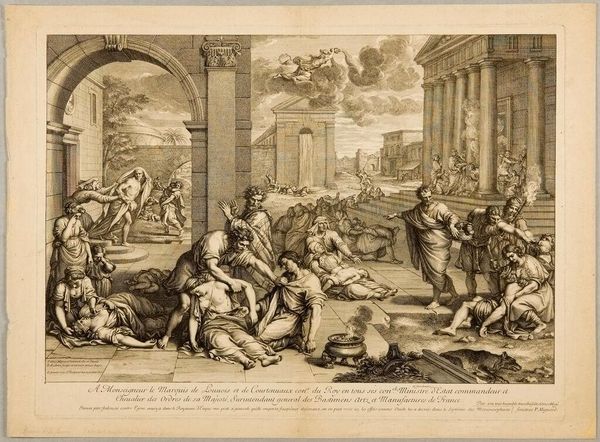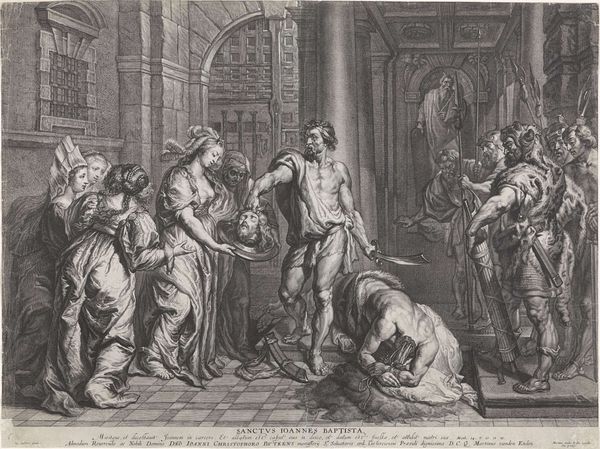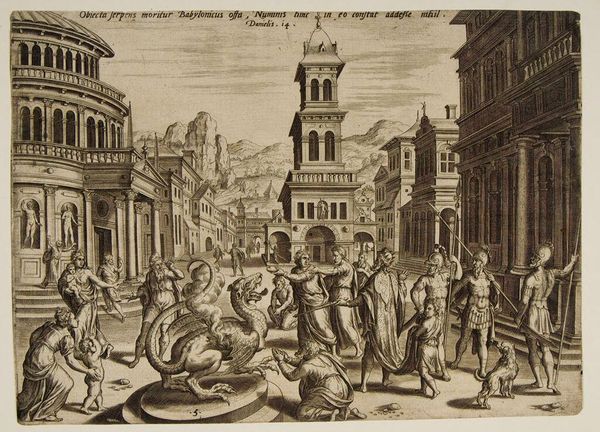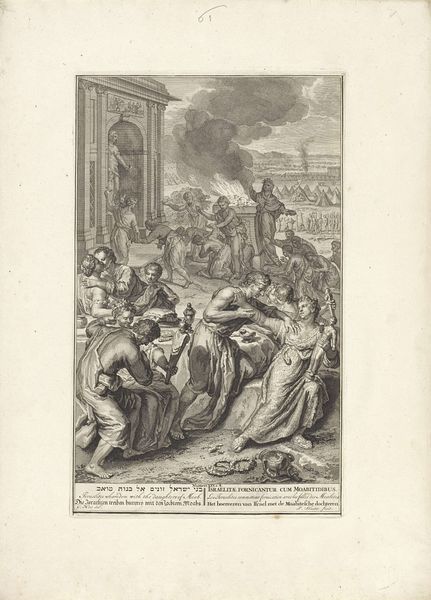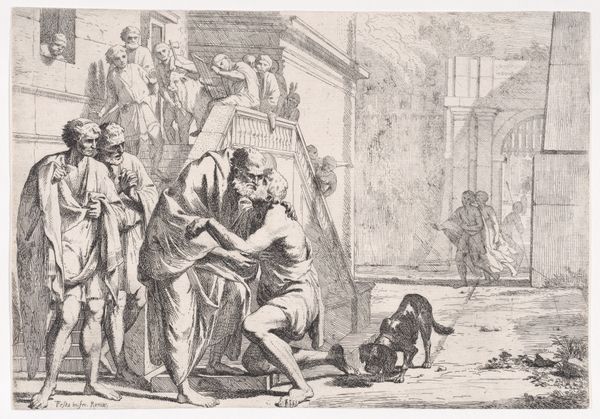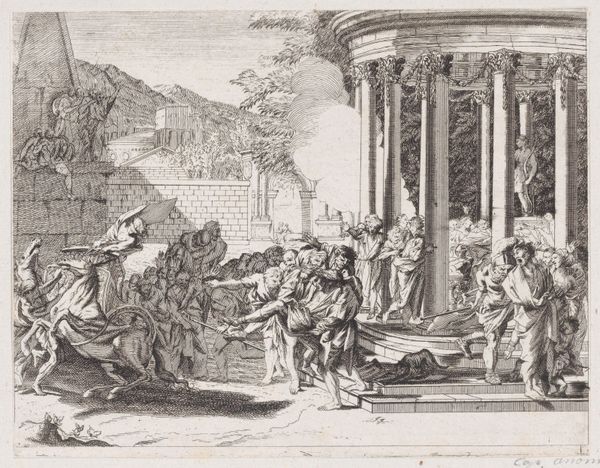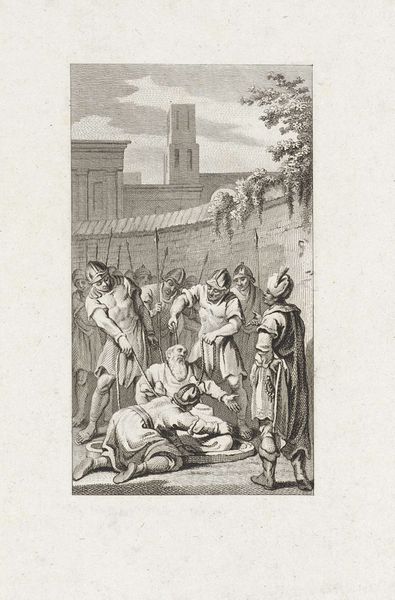
Copyright: CC0 1.0
Editor: This is Francesco Piranesi's "Temple of Neptune, Paestum." The etching presents a somewhat somber scene, but the architectural details are captivating. What draws your eye in terms of the composition and structure? Curator: Note how Piranesi uses the dense, repetitive lines to create texture and suggest the massiveness of the ruins. The formal arrangement of columns, despite their dilapidated state, provides a rigid structure contrasted against the organic overgrowth. How do you perceive the use of light and shadow? Editor: The shadows definitely emphasize the decay and add a sense of depth. I suppose the contrast contributes to the mood. Curator: Precisely. The sharp contrasts emphasize the geometric forms inherent in classical architecture. Consider how the figures are positioned in relation to the architecture: their presence provides scale and reinforces the monumentality of the Temple. The semiotic weight here lies in the implied narrative of time and decay. Editor: So it's less about the Temple itself and more about how Piranesi uses it to explore form and structure? That's fascinating.
Comments
No comments
Be the first to comment and join the conversation on the ultimate creative platform.
